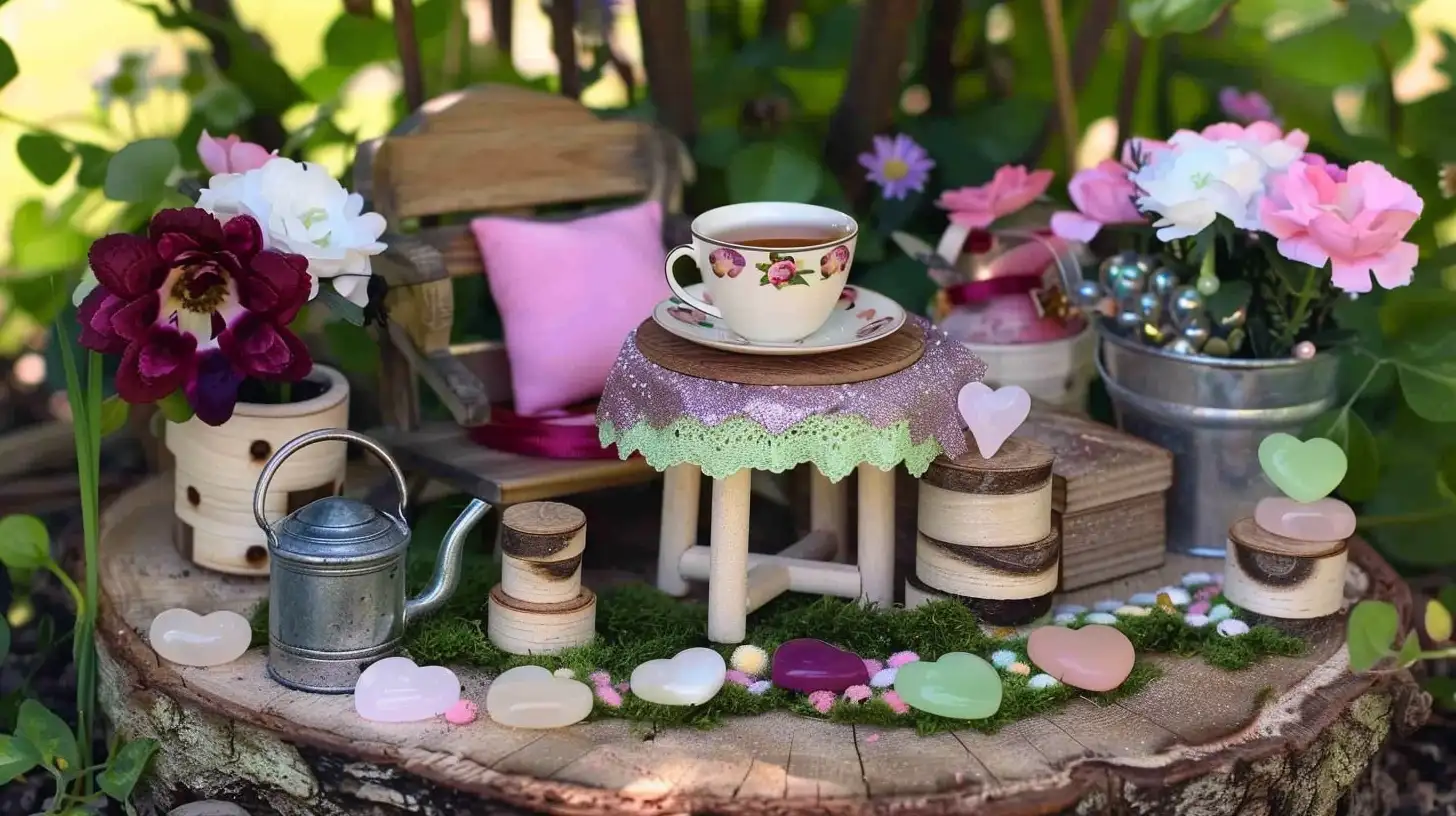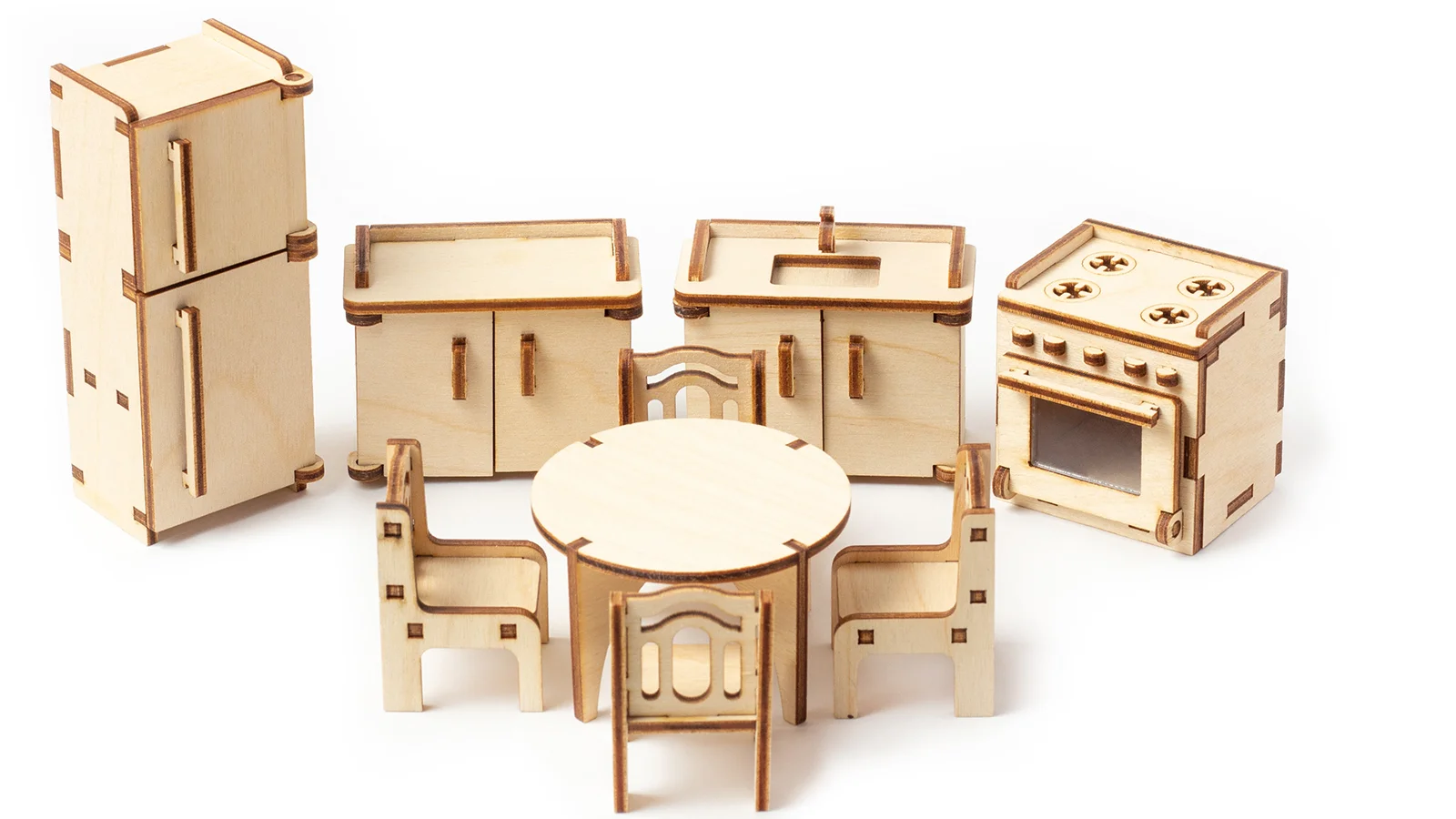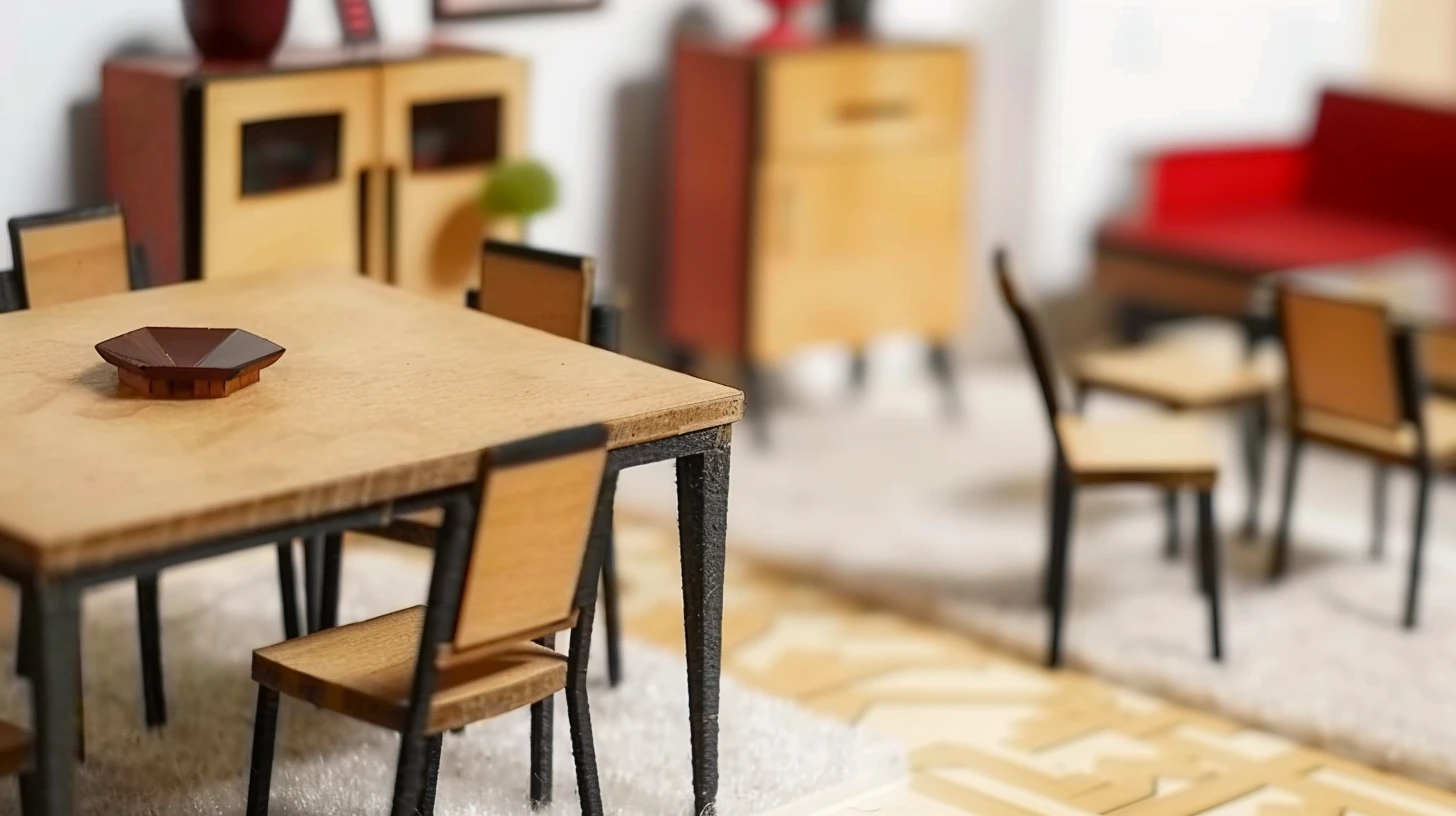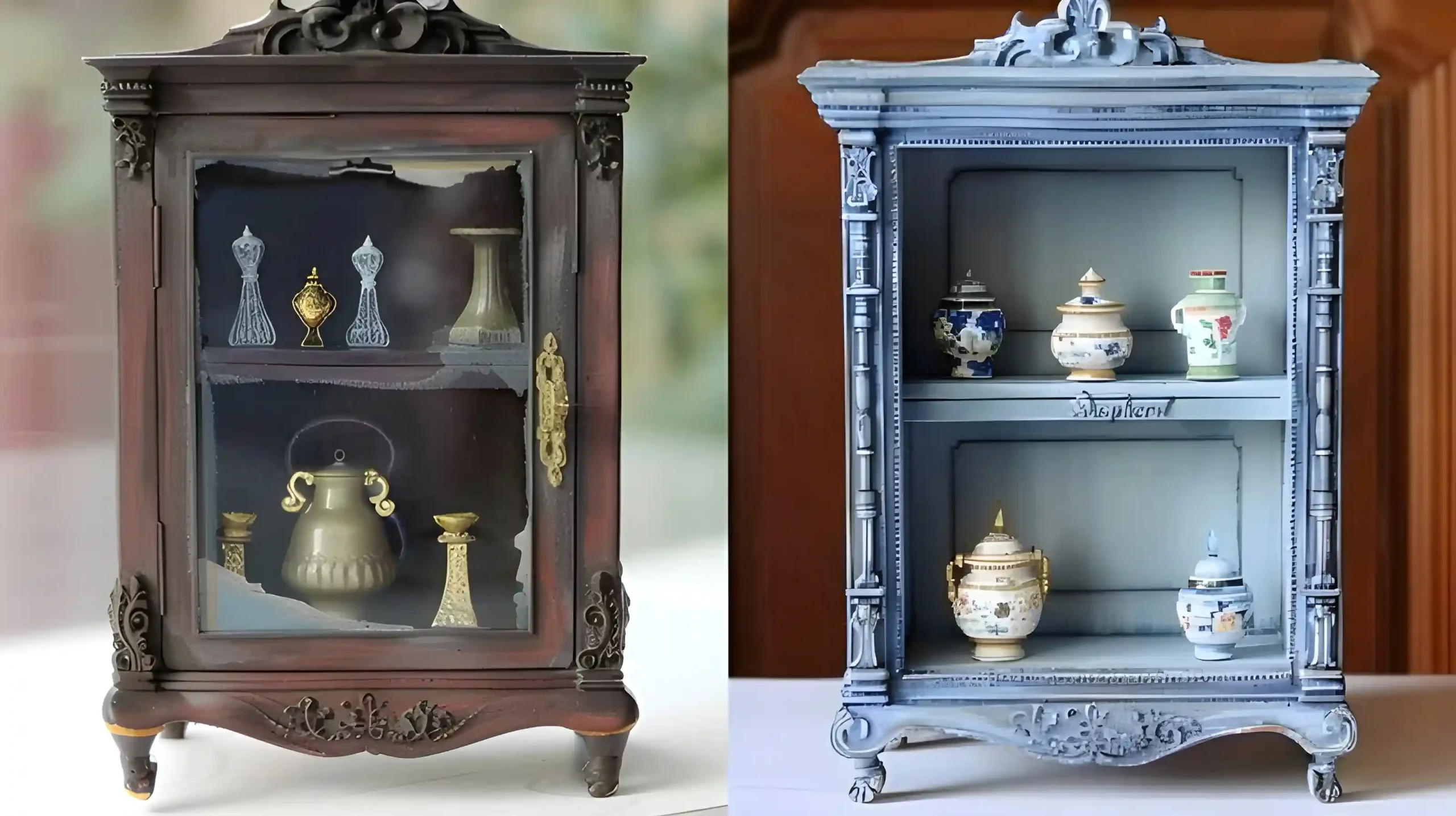
Miniature Furniture Plans: DIY Your Own Unique Dollhouse
Starting your journey into creating miniature furniture will make you realize that having a clear plan is essential for making intricate and realistic pieces to bring your dollhouse or diorama to life.
A well-crafted miniature furniture plan is like a roadmap. It guides you through the building process and ensures that every detail, from sizes to materials, is carefully considered.
What qualities make a plan truly effective, and how can you ensure that your small masterpieces turn out exactly as you imagine?
Key Takeaways
- Determine the scale of your dollhouse to ensure accurate miniature furniture plans.
- Choose a design that fits your dollhouse’s style and theme. Find inspiration from real furniture, magazines, and online resources.
- Create or find plans that match your skill level and desired detail. Pay attention to materials, finishes, and functionality.
- Use detailed woodworking plans or templates to guide your construction, reviewing and ensuring accuracy before cutting wood pieces.
- Consider the functionality of your miniature furniture. Make sure it looks appropriate in relation to other elements in your dollhouse.
Gather the Necessary Materials and Tools
To start your miniature furniture project, you’ll need various materials and tools to achieve the desired level of detail and realism.
For the materials, you’ll need wood, such as basswood or hardwood strips, which are ideal for creating intricate designs. Craft sticks can also come in handy for smaller-scale projects. You’ll also need glue to assemble your pieces and acrylic paints to add color and texture.
Additionally, you may want to use finishes designed for regular wood furniture to enhance the appearance of your miniature creations. These materials ensure you’re well-prepared to bring your miniature furniture plans to life.
Making Your Miniature Furniture Plans

As you start planning your miniature furniture, choose a design that fits your dollhouse’s style and theme. Next, create or find a plan that suits your skill level and desired level of detail.
Choosing a Design
When selecting a design for your miniature furniture, look for inspiration from real furniture designs, magazines, online resources, and dollhouse furniture books.
Pay attention to details like materials, finishes, and functionality to ensure your miniature furniture fits well in your dollhouse and looks realistic. By doing so, you’ll create dollhouse furniture that’s both charming and functional.
Creating or Finding Plans
When creating your own miniature furniture plans, you’ll need to consider each piece’s scale, design, and functionality.
However, if you’re new to miniature furniture making, finding existing plans might be a better option. You can find miniature furniture plans online, in books, or through crafting websites specializing in miniatures. These plans typically include detailed measurements, materials needed, and step-by-step instructions for constructing each piece.
Scale Considerations
When designing miniature furniture, determine the scale of your dollhouse to ensure that each piece fits proportionally.
You’ll need to consider the ratio of your miniature furniture to its real-life counterpart. Common scales for dollhouses include 1:12 (one inch represents one foot) and 1:24 (half an inch represents one foot). Understanding the scale helps maintain realism and coherence in your miniature room design.
Step-by-Step Guide to Building Miniature Furniture

Now it’s time to bring your miniature furniture plans to life! Start by preparing your materials and workspace, then cut and shape the wood to fit your design.
From there, assemble the pieces, add a finish, and put the final touches on your tiny masterpiece.
Step 1: Preparation
Gather all the necessary tools and materials before diving into your miniature furniture project. Having everything within reach will save you time and frustration.
Next, create detailed woodworking plans or templates for each piece of furniture you want to build, including measurements and design specifics. This will help you visualize your DIY project and make adjustments as needed.
Take your time to review your template, ensuring every detail is accurate and precise.
Step 2: Cutting and Shaping
Carefully cut and shape each miniature furniture piece according to your plan. Use sharp X-Acto knives and miniature saws for accuracy, and consider a miter box for precise angle cuts.
Secure your pieces in a small vise or with clamps to prevent accidents and ensure consistency. As you cut and shape, practice patience and attention to detail to achieve professional-looking results.
Sandpaper with fine grit is essential for smoothing out rough edges and surfaces on your miniature furniture pieces. Remember to take your time and focus on precise cuts, and you’ll be rewarded with intricate, detailed miniature furniture.
Step 3: Assembly
Now, it’s time to assemble your miniature furniture. Take the wood pieces you’ve cut and sanded, and apply wood glue to join them together. Use clamps to hold the pieces in place while the glue dries.
Make sure to follow the assembly instructions carefully, as the order and alignment of the pieces are crucial. You may need to use your saws to make any necessary adjustments.
Once the glue is dry, remove the clamps and use sandpaper to smooth out any rough edges.
Step 4: Finishing Touches
Add the finishing touches to your miniature furniture. Transform it from a mere skeleton into a beautifully crafted piece. Start by sanding all surfaces to ensure a smooth finish.
Next, apply a primer or sealant to help your paint adhere better and prevent chipping or peeling. Use fine-tipped brushes or foam applicators to precisely paint intricate details.
Add a clear coat or varnish to protect your piece from wear and tear. Finally, add decorative elements like knobs, handles, or embellishments to enhance the overall look.
Tips and Tricks for Successful Miniature Furniture Making

As you work on your miniature furniture projects, keep in mind that accuracy and precision are key to achieving realistic and sturdy pieces.
Also, consider customization and personalization options to make your furniture truly unique.
Accuracy and Precision
Mastering the art of accuracy and precision is important for achieving professional-looking results in making miniature furniture. Adopting a few essential habits will elevate your craftsmanship.
To ensure accuracy, start by measuring twice and cutting once. For detailed work, it’s also crucial to use high-quality miniature tools such as precision saws and mini drills.
Additionally, practice patience and pay close attention to detail when assembling tiny pieces to achieve precise results. Consider using magnifying tools or glasses to enhance precision when working on intricate details.
Customization and Personalization
Customization is all about adjusting to fit your miniature world’s theme and style. You can personalize your furniture by selecting specific materials, finishes, and colors that match your vision.
Consider adding unique details like hardware, upholstery, or embellishments to give your pieces an extra layer of realism.
Don’t be afraid to experiment with different scales and dimensions to ensure a perfect fit within your dollhouse or miniature setting.
Personalization allows you to incorporate personal touches like monograms, patterns, or designs that make your furniture stand out.
Maintenance and Care
Follow a few simple maintenance and care tips to extend the life of your miniature furniture creations. Regularly dust your miniature furniture with a soft brush or cloth to prevent buildup.
Avoid direct sunlight, which can cause fading and warping. Keep your miniature furniture away from moisture to prevent damage and mold growth.
When not in use, store your miniature furniture in a cool, dry place to maintain its condition. Consider using furniture polish or wax specifically designed for miniature furniture to enhance its appearance and prolong its lifespan.
Conclusion
You’ve successfully created a miniature furniture plan, and now it’s time to bring your design to life. With precision and patience, you’ll craft a beautiful and functional piece. Remember to stay focused on the details, and don’t hesitate to experiment with new techniques.
Keep your plan nearby as you work, referring to it often to ensure accuracy. With dedication and practice, you’ll master the art of miniature furniture making, creating pieces that will impress and delight you.
FAQs
What Kind of Wood Is Used for Miniature Furniture?
Various types of wood are suitable for a small-scale project, such as craft sticks, hardwood strips, or basswood, which is a popular choice due to its versatility and availability.
How to Make My Own Doll Furniture?
Start by gathering materials, then design or choose a plan that fits your style. Cut, assemble, and finish each piece, experimenting with techniques to personalize your unique creations.
What Is the Best Material for a Miniature House?
When building a miniature house, you’ll want a material that’s easy to work with and durable. Basswood, Obeche, and Jelutong are popular choices. But hardwood veneer strips are ideal for smaller-scale projects, offering strength and texture.
How to Glue Miniature Furniture?
Use high-quality wood glue when gluing small pieces together. Apply a small amount to the joint with a toothpick or brush, and then clamp gently and let it dry completely.
